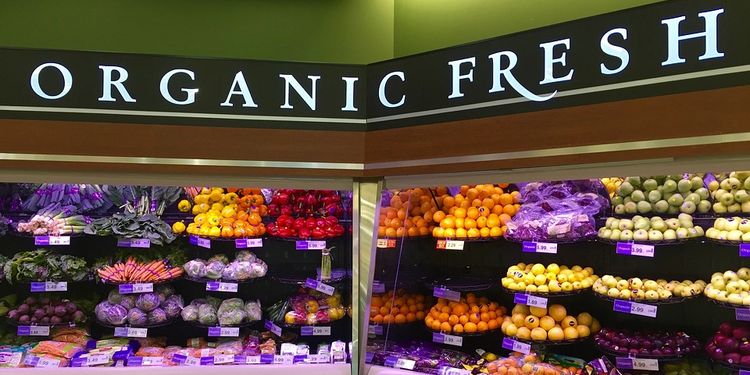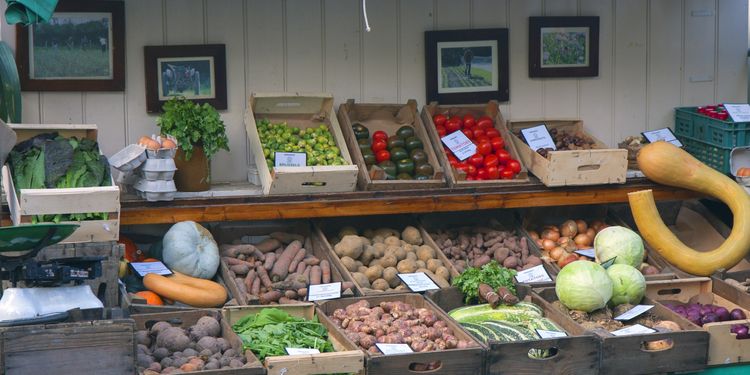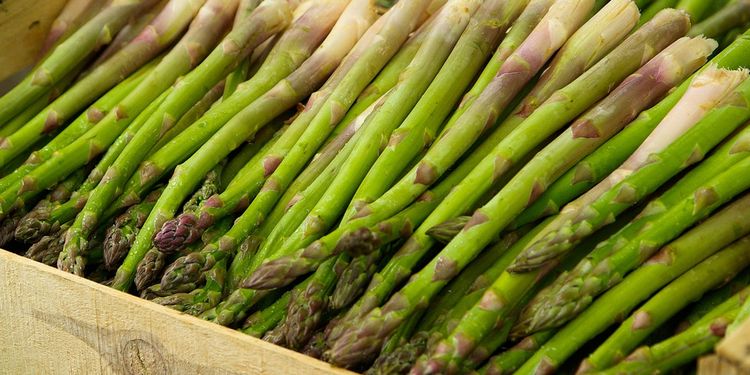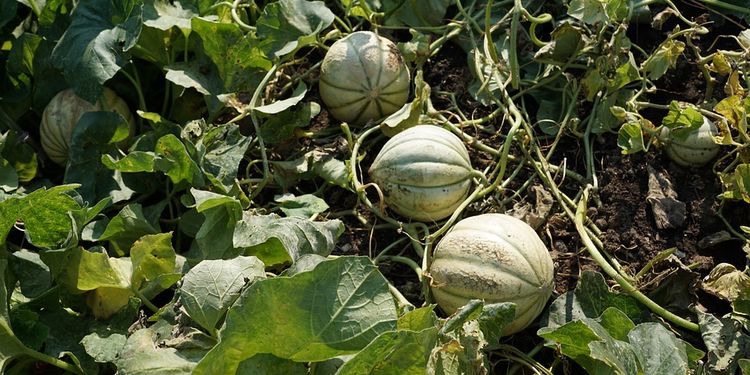Foods To Buy Organic vs. Conventional

Certified organic foods are generally safer to eat than non-organic— you know the organic products have been grown without all those nasty pesticides, herbicides, fungicides, and so on. But you’ve probably also noticed how much more expensive organic food products are.
Although it seems odd to be penalized for trying to eat healthier, remember that in the long run, those higher grocery bills could translate into lower healthcare costs. But if you need to keep an eye on your budget, which foods are the most important ones to buy organic and which ones don’t matter so much?
The Dirty Dozen
When it comes to fresh produce, there are some crops that get sprayed with more chemicals than others. The foods with the highest risk of being tainted with trace amounts of toxic chemicals are the ones you should always try to buy organic. They include:
- Celery: Believe it or not, celery is the very worst fresh food to buy non-organic. Conventionally grown celery is coated in nasty chemicals— you should choose organic every single time.
- Hot Peppers: Rich in flavor and vitamin C, conventionally grown hot peppers almost always carry significant pesticide residues.
- Apples: An apple a day keeps the doctor away— except when it’s been so heavily sprayed that toxic chemical residues even show up in apple juice and applesauce.
- Peaches: Don’t you just love the taste of a fresh peach? So do lots of creepy crawlies in nature, which is why non-organic peaches are heavily laced with all kinds of pesticides. Nectarines, by the way, have the same problem.
- Strawberries: The soft fruit is very prone to fungus, so strawberry crops gets sprayed with huge doses of fungicides and as many as 17 pesticides. As it turns out, organic strawberries tend to have nearly 20% more of the good stuff you want (antioxidants) anyway.
- Grapes: Non-organic grapes are the recipients of too many pesticide applications, leaving toxic residues on the grapes, as well as raisins. As many as 15 different pesticide residues have been found on just one grape!
- Spinach: Keep in mind that if it was conventionally grown, even frozen and canned spinach has the same level of pesticide residue as fresh spinach. While you’re at it, add kale and collard greens to the list as well— they’re also heavily sprayed.
- Sweet Bell Peppers: Huge crops of bell peppers often get sprayed with as many as 15 different pesticides. Go for the organic version, or better yet, grow your own at home.
- Cucumbers: Cukes are cool— literally (the inside temperatures of one on the vine can be 20 degrees cooler than the environment in which it’s growing). However, conventionally grown cucumbers have been heavily treated with pesticides.
- Cherry Tomatoes: As with so many other fruits, cherry tomatoes have valuable antioxidants, but if conventionally grown, they also carry a lot of pesticide residue.
- Snap Peas: The biggest chemical threat here is from imported snap peas, so to enjoy their vitamin C and fiber benefits, choose organic.
- Potatoes: They may grow underground, but they’re fed from the green leafy plant above ground, which gets sprayed with chemicals when conventionally grown. In fact, potatoes often top the list of pesticide-bearing fruit by weight.
The Clean 16
There are a number of foods that don’t get sprayed with nearly as many chemicals, even when conventionally grown. This means you really don’t have to worry about choosing the organic option for the following:
- Cauliflower is a like a closeted super-food. It’s got lots of healthy phytochemicals and anti-inflammatories, which means it helps ward off a huge range of conditions and problems.
- Avocados are great for healthy fats that lower cholesterol, vitamin E, potassium, and adding a nice creaminess to various recipes. Their thick skin means that even when pesticides are used, they don’t make it into the part you eat.
- Onions can make you cry, right? Well, they have a similar effect on many pests, so they don’t need much in the way of pesticides. Only 0.3% of conventionally grown onions tested positive for any chemical residue.
- Coconuts and coconut oil are virtually pesticide-free, which is a good thing considering the many benefits of coconut oil, including using it for oil pulling.
- Sweet corn is often vilified for not packing much of a nutritional punch, but it actually has several phytochemicals that promote healthy vision, as well as antioxidants such as beta-carotene and lutein.
- Pineapples are packed with all kinds of great stuff, including potassium, copper, manganese, calcium, magnesium, vitamin C, beta-carotene, thiamin, B6, and folate, not to mention both soluble and insoluble fiber.
- Cabbage isn’t very appealing to very many pests, so it doesn’t get treated heavily with chemicals. It’s a great source of vitamin K, vitamin C, and vitamin B6. You can also make your own sauerkraut and enjoy the many health benefits of a fermented food.
- Mangoes have antioxidant compounds that help ward off a variety of cancers, as well as a host of other nutrients. A mango a day would keep the doctor away much more effectively than an apple a day.
- Sweet peas have the advantage of being protected inside a pod until shelled. They are a good source of vitamin K, manganese, dietary fiber, vitamin B1, copper, vitamin C, phosphorus, and folate.

PHOTO: JACKMAC34/PIXABAY.COM - Asparagus is a very pricy food when it’s organic. Luckily, asparagus does well in testing for pesticide residue— only 3.3% comes up with anything significant.
- Papayas are a rich source of antioxidant nutrients, including carotenes, vitamin C, and flavonoids, and rarely carry chemical residues.
- Eggplant’s biggest benefits include fiber, vitamin B1, and copper, as well as phytonutrients such as nasunin and chlorogenic acid.
- Grapefruits have a unique combination of fiber, potassium, lycopene, vitamin C, and choline that make them among the best fruits for heart health.
- Kiwi fruits have no fewer than 20 vital nutrients, including five times the vitamin C as oranges!

PHOTO: STRECOSA/PIXABAY.COM - Cantaloupe (and you can throw in honeydew melons as well) have thick skins and aren’t prone to much in the way of pest problems, so buying organic isn’t important. The good news is they’re packed with antioxidants and anti-inflammatory phytonutrients.
- Sweet potatoes are sometimes dipped in a fungicide bath before being packed and shipped, but it’s not that bad, and peeling them before eating makes a big difference.
Why are Pesticides So Dangerous?
A group called the Environmental Working Group (EWG) notes how there’s widespread agreement among scientists the residues of pesticides and other chemicals found on conventionally grown food can have negative health effects on health, especially during early life.
This is something we need to pay attention to, because although the US only boasts 2% of the world’s population, we use 24% of its pesticides. You could say we’re a bit spray-happy. The use of pesticides can be linked to leaky gut, ADHD, various cancers, Parkinson’s disease, and birth defects, among other things.
Benefits of Buying Local
If you’re concerned about the environmental impact of modern farming methods, then buying local needs to be a top priority. It just doesn’t make sense to grow a head of lettuce in California and then ship it across the country to Boston.
Most of the food you eat has traveled an average of 1,500 miles to get to your plate, and all that shipping contributes to climate change. In fact, nearly 20% of the fossil fuel consumed in the US can be directly linked to our food system! If everybody ate just one meal a week that was sourced locally, we’d save 1.1 million barrels of oil each and every week.
Local small-scale farmers typically aren’t using as many chemicals on their crops as mega-farms, and because the food doesn’t travel far, you’ll be getting it at peak freshness with the highest value. It’s not hard to see why buying local is considered by many to be even more important than buying organic. The ideal combination is both local and organic.

How to Eat Clean on a Budget
Fresh local food will often cost less than food shipped across the country or from other parts of the world. Shop at farmer’s markets and join a CSA (subscription farm) to get as much produce as you can handle during the growing season.
Skip all the highly processed convenience foods and opt for fresh, locally grown food. Be smart about when to buy organic and when it doesn’t matter so much based on the lists presented above. At the grocery store, stock up on frozen produce since it doesn’t go bad and still has the nutritional benefits you’re after.
Look for organic and non-GMO food products in unlikely places, such as discounters like TJ Maxx, Home Goods, and Marshall’s— you may be surprised at what you can find! One of the easiest ways to cut your food budget is to eat less meat; it’s expensive, and you don’t really need a whole lot of it to get its benefits. Above all else, though, support your local food system!
Summary
Eating healthy doesn’t mean you have to buy everything organic. You can be smart about this by utilizing the “dirty dozen” and “clean sixteen” lists presented in this article to help you stay on track with the foods that need to be organic and those that don’t. Any time you can, buy locally grown organic food. When that’s not feasible, opt for local as much as possible.


